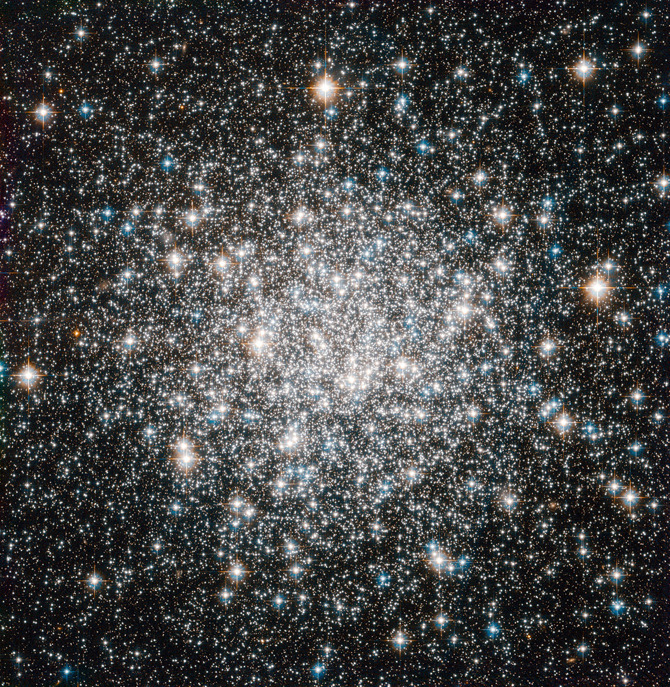It looks like you're using an Ad Blocker.
Please white-list or disable AboveTopSecret.com in your ad-blocking tool.
Thank you.
Some features of ATS will be disabled while you continue to use an ad-blocker.
5
share:

Hubble Sees a Ten Billion Year Stellar Dance
The NASA/ESA Hubble Space Telescope offers this delightful view of the crowded stellar encampment called Messier 68, a spherical, star-filled region of space known as a globular cluster. Mutual gravitational attraction amongst a cluster’s hundreds of thousands or even millions of stars keeps stellar members in check, allowing globular clusters to hang together for many billions of years.
Astronomers can measure the ages of globular clusters by looking at the light of their constituent stars. The chemical elements leave signatures in this light, and the starlight reveals that globular clusters' stars typically contain fewer heavy elements, such as carbon, oxygen and iron, than stars like the Sun. Since successive generations of stars gradually create these elements through nuclear fusion, stars having fewer of them are relics of earlier epochs in the Universe. Indeed, the stars in globular clusters rank among the oldest on record, dating back more than 10 billion years.
How can people see something like this and think NASA is a waste of money? There is so much to see and learn hopefully we won't kill each other off before we can see something like this in person.
reply to post by buster2010
Thats why I am thinking that "globular" clusters are remnants of galaxies that have been absorbed by our own. The "core element" including maybe a singularity, are all thats left of an ancient dance between galaxies (ours won). I have no proof of that, just heard it recently and liked the sound if it.
Edit: Excellent pic by the way, thanks for bringing it. I wonder if life is possible on suns in and around there and if there is such a thing as "night" on any planets.
Since successive generations of stars gradually create these elements through nuclear fusion, stars having fewer of them are relics of earlier epochs in the Universe. Indeed, the stars in globular clusters rank among the oldest on record, dating back more than 10 billion years.
Thats why I am thinking that "globular" clusters are remnants of galaxies that have been absorbed by our own. The "core element" including maybe a singularity, are all thats left of an ancient dance between galaxies (ours won). I have no proof of that, just heard it recently and liked the sound if it.
Edit: Excellent pic by the way, thanks for bringing it. I wonder if life is possible on suns in and around there and if there is such a thing as "night" on any planets.
edit on 3-8-2012 by intrptr because: additional
new topics
-
Israel attacking Iran again.
Middle East Issues: 14 minutes ago -
Michigan school district cancels lesson on gender identity and pronouns after backlash
Education and Media: 18 minutes ago -
When an Angel gets his or her wings
Religion, Faith, And Theology: 1 hours ago -
Comparing the theology of Paul and Hebrews
Religion, Faith, And Theology: 1 hours ago -
Pentagon acknowledges secret UFO project, the Kona Blue program | Vargas Reports
Aliens and UFOs: 2 hours ago -
Boston Dynamics say Farewell to Atlas
Science & Technology: 3 hours ago -
I hate dreaming
Rant: 3 hours ago -
Man sets himself on fire outside Donald Trump trial
Mainstream News: 5 hours ago -
Biden says little kids flip him the bird all the time.
Politicians & People: 5 hours ago -
The Democrats Take Control the House - Look what happened while you were sleeping
US Political Madness: 6 hours ago
5
